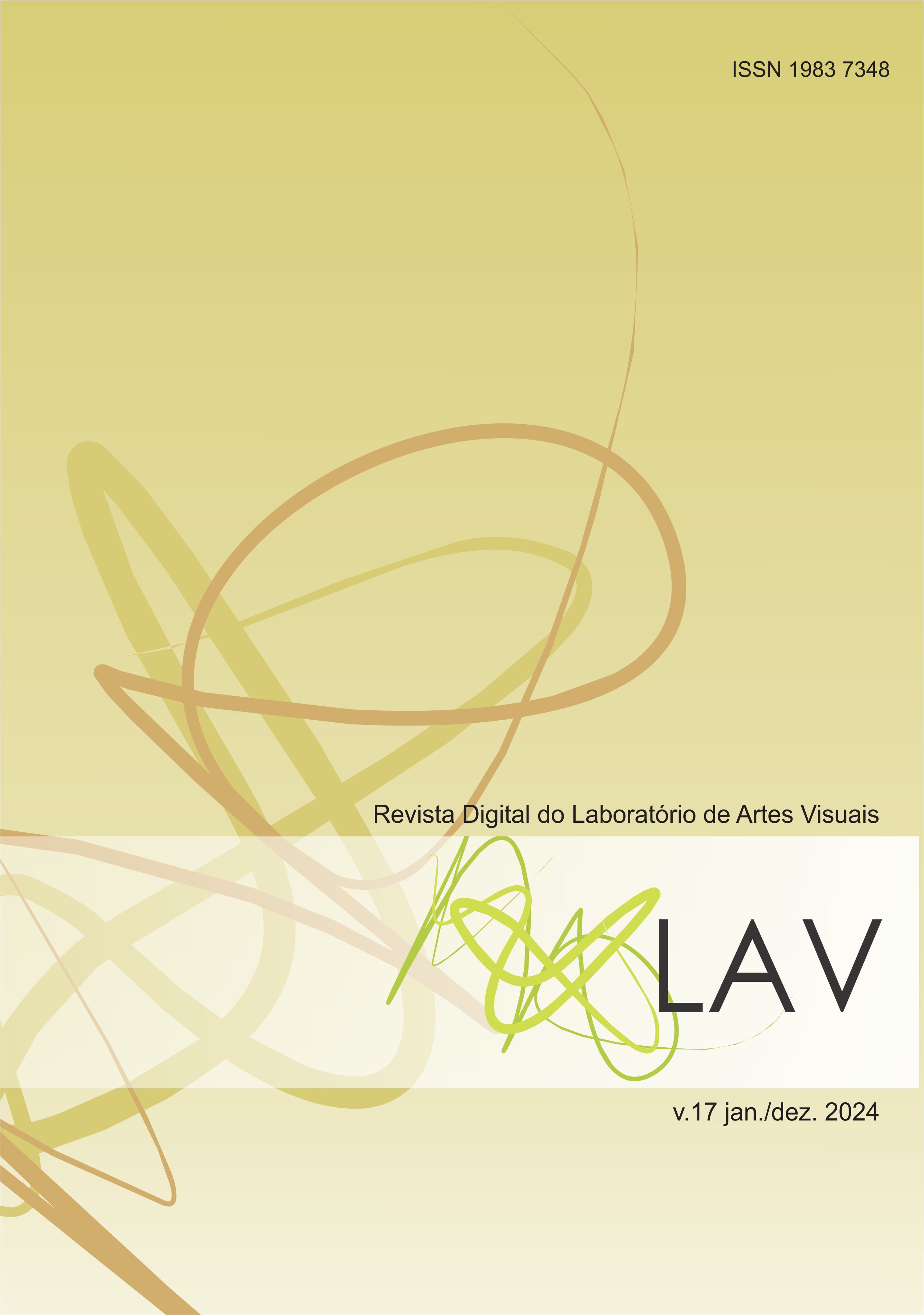Experimentações de uma docência com arte nos Anos Iniciais da Educação Básica
DOI:
https://doi.org/10.5902/1983734888071Palavras-chave:
Currículo, Arte, OficinArte, Docência, DidáticArtistaResumo
Neste artigo à docência envolvida com arte indaga acerca dos resultados que um currículo não prevê: quando estes podem ser responsáveis por uma educação que atenda questões para além da assimilação dos conteúdos programáticos? E: como a arte pode participar destes momentos? Questiona-se os modos de atuar com o currículo frente às infinitas possibilidades presentes nas forças criadoras da arte, que venham a ser traduzidas para a educação na sensibilidade de uma professora que inventa didáticas que excedem as linhas duras do currículo, com estudos fundamentados em Gilles Deleuze, Félix Guattari e Sandra Corazza. A escrita discorre sobre a elaboração e execução das OficinArtes, encontros com crianças do primeiro ano dos Anos Iniciais de uma escola da rede pública municipal. Seguimos algumas suspeitas quanto às garantias para que as crianças conquistem habilidades em sua aprendizagem. Nosso objetivo foi o de definir algumas linhas que convocam a arte como um conjunto de forças ativas. A pesquisa de doutorado, de onde se extrai este artigo, utilizou o método cartográfico que tem como característica o acompanhamento dos processos por um pesquisar atento às pistas que chegam. Problematizou-se o desdobrar de um currículo por didáticas mais potentes que capturem as crianças, é nesse aspecto que uma sala de aula pode ser uma usina de práticas responsáveis por atividades inventivas. As práticas escolares engessadas em modelos prontos exigem de uma professora que vá ao encontro de forças que alimentam uma necessidade criadora, com a arte ela poderá colocar o currículo, e tudo com o que está implicado, em movimento.
Downloads
Referências
AUERBACH, Patricia. O Lenço. São Paulo: Editora Brinque-Book, 2013.
BLANCHOT, Maurice. La part du feu. Paris: Editora Éditions Gallimard, 1949.
BRASIL. Ministério da Educação. Base Nacional Comum Curricular. Brasília, DF: MEC/Secretaria de Educação Básica, 2018.
CORAZZA, Sandra Mara. Docência-pesquisa da diferença: poética de arquivo-mar. Porto Alegre: Doísa, 2017.
CORAZZA, Sandra Mara. Escrileituras: Ler-Escrever em Meio à Vida: Didática-Artística da Tradução: Transcrições. Belo Horizonte: Autêntica, 2013.
CORAZZA, Sandra Mara. Uma vida de professora. Ijuí: Ed. Unijuí, 2005. – p.144.
DELEUZE, Gilles. Diferença e Repetição (Tradução de Luiz B. L. Orlandi). São Paulo: Editora 34, 2018.
DELEUZE, Gilles. Espinosa filosofia prática. São Paulo: Escuta, 2002.
DELEUZE, Gilles. O ato de criação. Palestra proferida em 17 de março de 1987. Trad. José Marcos Macedo. Edição brasileira: Folha de São Paulo, junho de 1999.
DELEUZE, Gilles e GUATTARI, Félix. Mil platôs: Capitalismo e esquizofrenia, vol. 3, São Paulo: Editora 34, 2012.
DELEUZE, Gilles e GUATTARI, Félix. O que é a Filosofia? 2 ed. São Paulo: Editora 34, 1993.
FOUCAULT, Michel de. O pensamento do fora. Crítica, n° 229 (junho de 1966), p. 523-546, retomado em Dits et Writings I. 1954-1969, Gallimard, Paris, 1994 (NRF), p. 521.
KROEF, Ada. et al. Breviário dos sonhos em educação. São Leopoldo: Editora Oikos, 2019.
NIETZSCHE, Friedrich. O Nascimento da Tragédia. São Paulo: Companhia de Bolso, 2020.
NIETZSCHE, Friedrich. Humano, demasiado humano. São Paulo: Companhia das Letras, 2005.
PELBART, Peter Pal. Da Clausura do fora ao fora da clausura: loucura e desrazão. São Paulo: Editora Iluminuras, 1989.
PREFEITURA MUNICIPAL DO RIO GRANDE. Secretaria de município da educação. Documento orientador curricular do território rio-grandino: ensino fundamental [Recurso Eletrônico] / Felipe Alonso dos Santos (org) [et al]. Il. capa por Michelle Coelho Salort – Rio Grande: SMED, 2019.
RAMPAZO, Alexandre. Um universo numa caixa de fósforos. São Paulo: Editora Panda Books, 2011.
RUILLIER, Jérôme. Aqui é minha casa. São Paulo: Martins, 2009.
SILVA, Tomaz Tadeu da. O currículo como fetiche. A poética e a política do texto curricular. Belo Horizonte: Autêntica, 2010.
YOUNG, Ed. Sete Camundongos Cegos. Tradução de Monica Stahel. São Paulo: WMF Martins Fontes, 2011.






